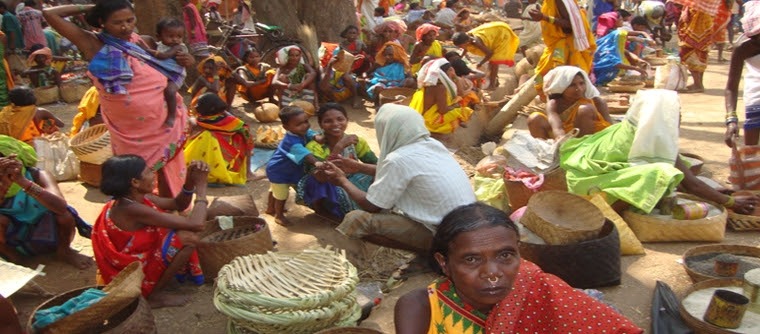
Tribal Economy :
Tribal Economy in Odisha: A Brief Overview
Odisha, located on the eastern coast of India, is home to a rich tapestry of tribal communities. With over 60 tribal groups, the state has one of the highest proportions of tribal populations in India. These communities, which constitute about 22% of the state’s population, have a unique and diverse economic structure that is deeply tied to their cultural practices, natural resources, and traditional knowledge.
Key Aspects of Tribal Economy in Odisha
- Agriculture and Livestock:
Agriculture forms the backbone of the tribal economy in Odisha. Most tribal families engage in subsistence farming, cultivating rice, millet, maize, and pulses. Paddy is the primary crop, with the fertile plains of the Mahanadi basin being a key agricultural zone. Tribals also raise livestock, including cattle, goats, and poultry, which supplement their income and provide food security. - Forest-Based Livelihoods:
Tribal communities in Odisha are heavily dependent on forests for their livelihood. They gather a variety of forest products such as fruits, tubers, honey, medicinal plants, and firewood. The collection and sale of Non-Timber Forest Products (NTFPs) play a critical role in their economy, particularly for groups in remote and hilly areas. These resources are vital for both sustenance and income generation, often traded in local markets. - Handicrafts and Artisanal Products:
Odisha’s tribals are known for their craftsmanship, creating a range of handicrafts that are sold in local and national markets. These include handwoven textiles, bamboo products, pottery, and intricate tribal jewelry. The art and craft traditions are not just economic activities, but also cultural expressions that reflect the heritage of each community. - Livelihood through Tourism:
With the growing interest in indigenous cultures, tribal regions in Odisha are seeing an increasing number of domestic and international tourists. The local communities have begun to engage with tourism, offering cultural experiences, tribal crafts, and eco-tourism. However, this presents challenges, as it requires balancing economic opportunities with the preservation of their cultural and environmental integrity. - Challenges to Tribal Economy:
Despite these economic activities, tribals in Odisha face several challenges. Land alienation due to industrialization and mining, encroachment on forest lands, and inadequate access to modern infrastructure and markets continue to hinder their economic growth. The commercialization of agricultural products often leaves tribals with low bargaining power, and they remain vulnerable to exploitation by middlemen. - Government Initiatives:
The government has launched various schemes to improve the livelihood of tribal populations in Odisha, including tribal development programs, forest rights recognition, skill development, and access to healthcare and education. Despite these efforts, there is a need for more focused policies that cater to the unique needs of tribal communities and ensure sustainable development without eroding their cultural and ecological heritage.
Conclusion
The tribal economy in Odisha is shaped by a delicate balance between tradition and modernity. While agriculture, handicrafts, and forest-based livelihoods remain central to tribal life, external factors such as industrialization, land rights issues, and market access pose significant challenges. Strengthening policies for the protection of tribal rights and promoting sustainable economic practices will be key to ensuring that Odisha’s tribal communities continue to thrive in the face of evolving economic pressures.